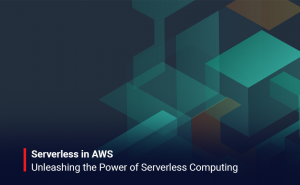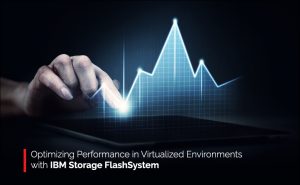The world of IT is rather interesting, especially when it comes to naming innovative tech. Rightly named as the “Flash” storage, these storage options write & perform random I/O options in a flash. Integrated with a nonvolatile memory, flash storage systems do not require any form of energy supply to store data. In simple words, your data will be available whenever you need it & the system won’t “lose” the data even if you turn off the system. Due to its speed & data retention qualities the flash storage system used across enterprises & devices as well.
Being an innovator & pioneer in the world of IT, IBM launched its range of flash storage options known as IBM Flash Storage in 2013. IBM Flash storage is the culmination of IBM’s years of expertise, research & experience across the Information & Technology industry. IBM Flash Storage offers a diverse portfolio of scalable, all-flash, hybrid flash storage systems that are faster, secure & carry out massive industrial workload with ease.
Difference between flash memory, SSD & HDD storage
When we talk about widely used storage options in the industry, flash memory & SSD storage options are two commonly heard terms that one might come across. Each storage type has distinct features that set them apart based on various applications. Here are some major differences between flash memory & SSD storage:
- HDD (Hard Disk Drive) is a type of storage system that relies on a spinning magnetic disk & mechanical read/write head to store data
- SDD (Solid State Drive) has no moving parts & has been derived from flash storage systems. It uses interconnected flash storage chips called “NAND”. These chips retain data even when there’s no power supply. SDDs perform faster as compared to HDDs.
- While the purpose of both the options remains the same I.e. data storage the key differences lie in the method of storing data.
- HDD has a longer R/W time, higher latency & has a sequential data transfer while SDD has a shorter R/W time, lower latency & data transfer is in the form of random access
- HDDs are less reliable due to the chances of mechanical failures but the cost of per unit storage is less. On the contrary SDDs are more reliable & the cost per unit storage is more as compares to HDD storage.
What is IBM Flash storage?
IBM FlashSystems is the tech giant’s offering of high-performing flash storage systems. The entire product range has been engineered to tackle heavy workloads & has been designed to be more durable. The product line consists of four flash storage options namely, IBM Flash 5000, IBM Flash 5200, IBM Flash 7300 & IBM Flash 9500. IBM FlashSystems offer fast, secure & resilient storage options that suit the needs of individual organizations.
How does Flash Storage system Work?
The entire IBM Flash Storage system family combines the performance of flash and a NonVolatile Memory Express (NVMe)-optimized architecture with the reliability and innovation of IBM FlashCore technology and the rich feature set and high availability of IBM Spectrum Virtualize. IBM has engineered its flash storage system & has made it adaptive, responsive, secure & durable. The FlashSystem storage sport features like better flash management and durability, hardware-driven data reduction and encryption, FlashCore form factor, new hybrid cloud capabilities, ultra-low storage latency and blazing system performance.
IBM FlashSystem 5000
IBM FlashSystem 5000 is the entry level enterprise ready flash storage system of the IBM FlashSystem family. Talking about the farmework, this flash system solution sports a 24 NVMe high-availability flash device in a 4U storage enclosure with fully redundant chassis. IBM FlashSystem 5000 is a scalable, faster & affordable flash storage option that’s built to handles virtualization, desktop, production database & container level workloads with ease.
IBM FlashSystem 5200
The IBM FlashSystem 5200 is an all-flash hybrid storage option that provides a simplified data delivery solution. This enterprise level data service helps companies maintain the equilibrium between performance & affordability. The framework consists of 12 NVMe high-availability flash devices in a 1U storage enclosure drawer with fully redundant canister components which prevents a single point of failure.
IBM FlashSystem 7300
Built with IBM Spectrum Virtualize, IBM FlashSystem 7300 offers enterprise-class capabilities such as deduplication, innovative data reduction options with compression, and automated thin provisioning—all of which improve capacity and efficiency so you can store more in less space. Talking about the specs, this option sports a 24 NVMe high-availability flash devices in a 2U storage enclosure drawer with networked-based replication across 3 sites.
IBM FlashSystem 9500
IIBM FlashSystem provides upto 4.5 Petabytes of effective data storage in an efficient 4U storage enclosure drawer with networked-based replication across 3 sites. IBM FlashSystem 9500 provides petabytes of effective data storage in a very efficient four-rackunit chassis. It utilizes IBM FlashCore technology packaged into a 2.5-inch solid-state drive (SSD) form factor and uses a NVMe interface. IBM FlashSystem 9500 can deliver performance of 100 GB/s throughput or 1.6 million IOPS with a database-like workload.
One of the many reasons why flash storage gained & rapidly spread across all verticals of the Information & Technology Industry is mainly because of its portability & security features. IBM Flash storage is the culmination of IBM’s years of expertise, research & experience across the Information & Technology industry. It is a cost-effective, easy to use & secure flash storage solution that lets organizations solve their storage issues with IBM’s world class expertise. Small, Medium or Large sized organizations can leverage the scalability & data mobility features offers by IBM FlashSystem. Which makes it an ideal & high-performing flash storage option for small & enterprise level businesses alike. Learn more about IBM FlashSystems here.






